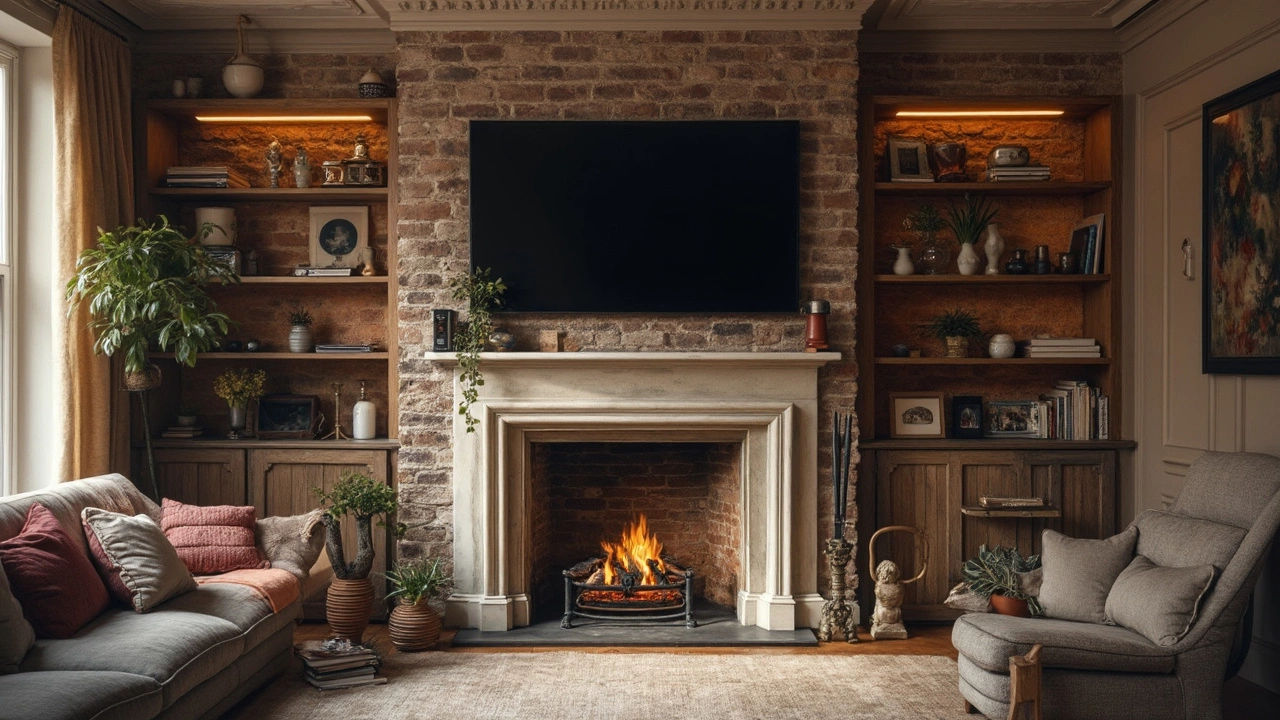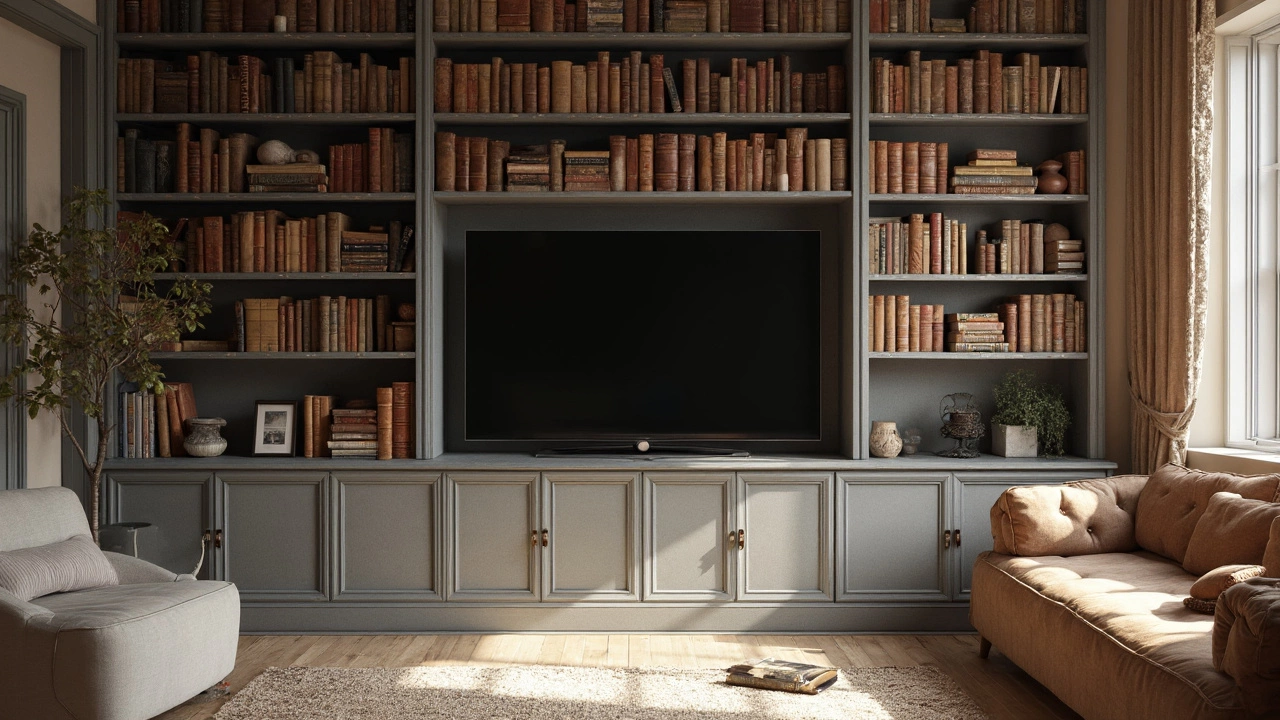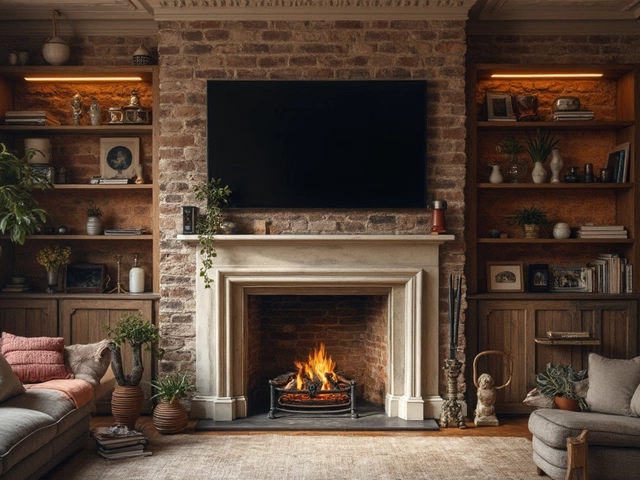What to Do When Your TV Doesn't Have a Stand

So, you've got your hands on a new TV but no stand, and now you're scratching your head, wondering what to do. Don't sweat it! You're definitely not stuck with holding your TV up forever. There are heaps of solutions to keep your TV from being the world's most expensive paperweight.
First up, think about wall mounting. It's not just a sleek look but also often frees up valuable floor space. It's ideal for smaller rooms or anyone trying to dodge the clutter monster. All you need is a sturdy wall and the right bracket.
If drilling holes in your wall feels like a one-way ticket to disaster, consider repurposing furniture you already own. Desks, dressers, or sturdy shelves can do the trick. Just make sure whatever you choose can support the TV's weight and won't topple over with a slight nudge.
- Wall Mounting Options
- Repurpose Furniture
- DIY TV Stand Ideas
- Adjustable Stand Alternatives
- Cautions and Considerations
Wall Mounting Options
When it comes to solving the problem of a missing TV stand, wall mounting your TV might just be your best bet. It's not only a popular trend but also a practical solution. Let's break down some common wall mounting options that can give your setup a sleek, modern touch.
Fixed Mounts
Fixed wall mounts are your no-fuss, straightforward option. They're sturdy and keep your TV close to the wall, giving you that neat appearance. However, once it's up there, it's not moving anywhere. So, make sure you choose your spot wisely since there won't be any tilting or swiveling to adjust viewing angles.
Tilt Mounts
If you want a bit of flexibility without too much extra cost, tilt mounts could be the right choice. These allow you to lean the screen up or down, which can be super handy if you need to mount your TV a bit higher on the wall or to reduce glare from lights and windows.
Full-Motion Mounts
Feeling fancy? Full-motion mounts let your TV do some gymnastic moves. Rotate it to face different parts of the room, pull it away from the wall, push it back—it's like having a TV with a very mobile neck. They're perfect for spaces where the seating area's flexible, but remember, they're a bit pricier and can be more complicated to install.
Install Like a Pro
- Find the studs in your wall. You're gonna need them for anchoring the mount securely.
- Market your holes according to the mount's specs, and measure twice before drilling.
- Attach the mount to the wall and the brackets to the TV. Just follow the instructions that come with your mounting kit.
- Get a friend to help lift the TV and secure it onto the mount. Two heads are better than one, especially if one of those heads is attached to a pair of strong arms.
With these wall mounting options, you're on your way to a more personalized and spacious TV setup. Whether you're all about simple and tidy or wish for maximum flexibility, there's a solution that'll fit your style and space.
Repurpose Furniture
Not everyone is up for drilling walls, and that's okay. Sometimes, the best solution is making good use of what you already have at home. Here's how you can breathe life into existing furniture to serve as an improvised TV stand.
Use Sturdy Tables or Desks
Got an old desk or table lying around? These can easily double as a makeshift TV stand. Just ensure they're strong enough to hold the TV's weight. A TV stand solution can be as simple as relocating a desk from another room. Plus, having drawers can help with storing remotes and cables, keeping your area tidy.
Bookshelves and Dressers
Bookshelves aren’t just for books, you know! Placing your TV on a lower shelf gives you access to higher shelves for additional storage. Meanwhile, a dresser can accommodate heavier TVs, and its drawers offer plenty of room for gadgets or DVDs.
Considerations for Stability
- Check the furniture's load capacity before setting your TV on it.
- Ensure your furniture is against a wall to avoid tipping.
- Use anti-tip safety straps if necessary.
So, whether it's that ancient table you couldn't part ways with or a bookshelf you thought had outlived its usefulness, consider the potential of these pieces. With a little creativity, you've got yourself a solid TV stand alternative without spending a dime.

DIY TV Stand Ideas
Alright, let's roll up our sleeves and dive into some DIY TV stand ideas that won't break the bank. Trust me, you don't have to be a master carpenter to pull these off! With a little creativity and elbow grease, you can whip up something that works just as well as a store-bought stand.
1. Stack Those Books
Got a bunch of old textbooks or dusty novels? Stack them neatly and use them to prop up your TV. It adds a quirky touch, and hey, it's meaningful too! Just make sure the stack is stable, so you don't topple your screen.
2. Pallet TV Stand
Wooden pallets are basically the Swiss army knife of DIY projects. You can grab one from a local store or marketplace for cheap, sometimes even free! Sand it down, slap on some paint or stain, and you've got a rustic TV stand. If you're feeling fancy, throw some wheels on there for mobility.
3. Cinder Block Creation
Cinder blocks and wood boards are surprisingly chic when combined correctly. Use two stacks of blocks for the sides and place a sturdy board across as the top shelf. This industrial look is both sturdy and modern.
4. Upcycled Crates
Check out your local thrift store or flea market for wooden crates. Stack and secure them on top of each other. The open crate faces can be used for storage, holding everything from DVDs to game consoles, which is a handy bonus.
5. Multi-Purpose Dresser
If you have an extra dresser lying around, why not re-purpose it as a TV stand? Clear out some drawers for extra storage, and you're golden! Just remember to use an anti-tip kit to ensure the dresser is stable with the TV on top.
Creating your own TV stand not only gives the space a personal touch but is sometimes needed to fit your specific space requirements or budget. Don't be afraid to mix things up and reuse what you already have at home!
Adjustable Stand Alternatives
Alright, so you're not feeling the drill, and re-purposing furniture isn't cutting it. No worries! Adjustable stands might be just your ticket. These bad boys offer flexibility and come in handy for anyone who likes to rearrange their space—or simply can't stand things looking the same for too long.
What exactly are adjustable stand alternatives? These are stands that can often be adapted in height, angle, or even position, giving you the freedom to find that sweet spot for your viewing pleasure.
Universal Adjustable Stands
First off, you've got universal stands. They're called 'universal' for a reason—they're designed to fit a wide range of TV models and brands. The cool part? Many of these stands allow you to tweak the height, which means no more stacking your TV on a pile of books to get it to the right altitude.
Mobile TV Carts
If mobility is your game, then mobile TV carts could be your MVP. Imagine a stand on wheels, and you've got the idea. These carts can roll from room to room, so whether you're in the living room or doing some morning yoga, your TV can tag along. Plus, they often include shelves for additional media players.
Swivel Stands
For those who love a good swivel, check out swivel stands. These stands allow you to rotate your TV to various angles so you can enjoy your shows from just about anywhere in the room. Perfect for shared spaces where everyone has a different favorite chair.
| Stand Type | Main Benefit |
|---|---|
| Universal | Height adjustable |
| Mobile Cart | Easy to move |
| Swivel | Rotates easily |
So next time you're stuck on what to do with a TV without a stand, remember that adjustable options are not only practical but can also enhance your TV viewing experience. Just make sure whatever you choose is sturdy and compatible with your TV's size and weight.

Cautions and Considerations
Alright, before rushing into mounting or setting up your TV in a temporary spot, there are some important things to consider. Your top priority should always be safety, both for your beloved TV and anyone around it.
Weight and Stability
First things first, check the TV’s weight. Not all walls or furniture pieces are created equal when it comes to supporting heaviness. Make sure whatever you anchor the TV to can handle its weight comfortably without risking collapse.
If you're using furniture instead of a traditional TV stand, it's often worth reinforcing the piece with brackets or anchors to prevent tipping. Think of it as child-proofing but for gadgets.
Wall Type Matters
When it comes to wall mounting, the type of wall is super important. Drywall on its own isn’t enough, so you'll need to anchor into studs. If your walls are plaster or concrete, use the right screws and anchors explicitly meant for those materials.
Measuring and Placement
Positioning is another crucial consideration. The TV should be at eye level from wherever you typically sit, and the distance between you and the screen should be about 1.5 to 2.5 times the diagonal length of your TV. Too close or too far can make viewing less enjoyable.
Table: Recommended Distance Based on TV Size
| TV Size | Recommended Viewing Distance |
|---|---|
| 32 inch | 4 - 6.5 feet |
| 40 inch | 5 - 8.5 feet |
| 50 inch | 6.5 - 10.5 feet |
| 60 inch | 7.5 - 12.5 feet |
Cable Management
Last but not least, cable management isn't just about appearances—it's safety, too. Tangled cords can be a trip hazard and can knock over your entire setup if someone gets seriously tangled. Use zip ties, cord covers, or even the TV's built-in cable management system if it has one.
